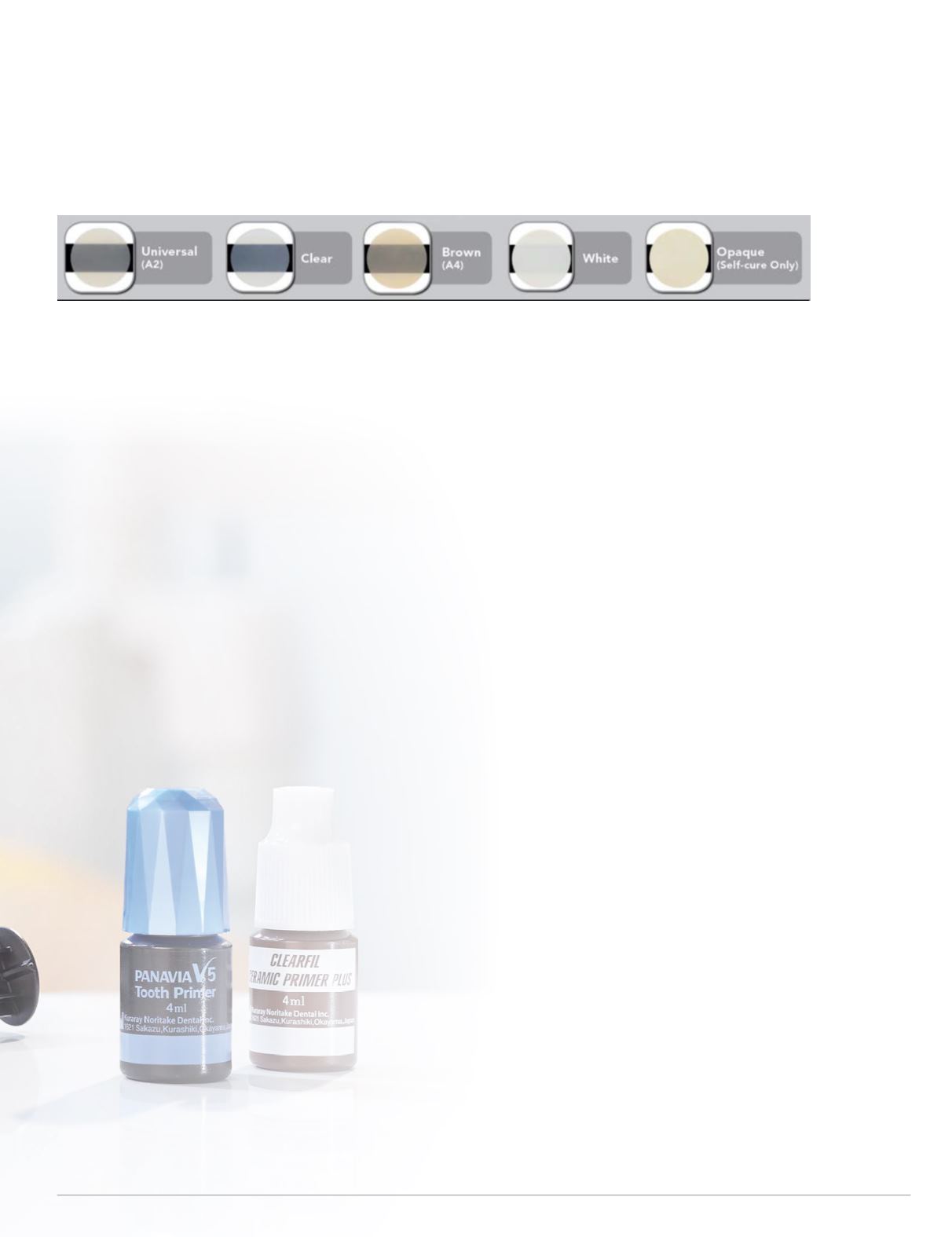
become an even greater part of the restorative arsenal.
Dental adhesive systems do have some significant advantages in
their use that cannot be ignored. They allow clinicians to become
more conservative in their preparations as traditional retention
and resistance form becomes less critical when a proper dental
adhesive is used to retain a restoration.
Dental adhesive systems allow for more esthetic restorations as
tooth-colored alternatives can be bonded to teeth instead of the
operator having to use more unaesthetic materials that require the
restoration to be retained mechanically.
For CEREC users, adhesives and resin cements have allowed
the technology to soar and become mainstream. Without adhe-
sives, millable ceramics would not survive the rigors of the oral
cavity with mere cementation alone. So, for the first 30 years of
the existence of CEREC — where only adhesive cementation was
possible — adhesive cementation systems have played a crucial
role in the success of the technology.
As with any technique or material, along with the advantages
there are some disadvantages that need to be dealt with. Adhesives
and resin cements which make up the dental adhesive system are
no exception.
The main disadvantage of these systems is that there can poten-
tially be an increased amount of sensitivity as compared to non-
adhesive cements. The other disadvantage of adhesive compo-
nents can be that the clinician, in some instances, is solely relying
on a dental bond to retain the restoration. And the bond may not
be as strong as the clinician anticipates, which results in a restora-
tion that may debond causing both clinician and patient grief.
It goes to reason, then, that an ideal bonding agent and dental
adhesive complex should give the user an opportunity to offer
their patients a minimal amount of sensitivity with the highest
bond strength possible.
With the discovery of adhesive bonding by Buonocore in 1955,
bonding was limited to enamel only at that time. Early pioneers
of bonding did not wish to etch the dentin, as the fear was that
by etching dentin, the tooth was doomed to be a dying pulp, the
patient exposed to unnecessary pain.
As materials and techniques have evolved over the years,
bonding has gone through an evolution where clinicians have
etched both the enamel and dentin with success. Meanwhile,
the fear of a overly sensitive tooth became largely unfounded,
assuming that a proper technique was used. As the techniques of
adhesive dentistry has evolved further, the trend has been to move
away from etching of the dentin as that process has led to many
clinicians experiencing sensitivity. The phenomenon is not the
result of etching the dentin itself, but in fact due to a more chal-
lenging protocol that involves etching the dentin. Manufacturers
have responded to this trend by developing self-etching bonding
agents to help minimize sensitivity.
The gold standard of etchless adhesive bonding has beenClearfil
SE from Kurarary. This system became one of the most popular
adhesive components because it allowed for high bond strengths
The cement
is available
in multiple
shades
13


